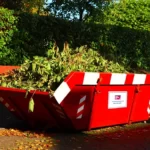Water damage is a common and often underestimated threat that can wreak havoc on homes and buildings if not properly addressed. Whether it’s due to flooding, leaks, or condensation, water damage can lead to structural issues, mold growth, and expensive repairs. In this guide, we will delve into the various types of Water Damage Blog, its effects, and most importantly, how to prevent it.
Types of Water Damage
Water damage comes in different forms, each with its own set of challenges. Flooding, which can result from heavy rain or burst pipes, can quickly inundate a property and cause extensive destruction. On the other hand, leaks from appliances, roofs, or pipes can lead to gradual damage that may go unnoticed until it’s too late. Additionally, condensation can accumulate over time, causing damage to walls, ceilings, and insulation. Understanding these types and their causes is the first step toward effective prevention.
Effects of Water Damage
The effects of water damage extend far beyond visible signs of decay. Water can weaken structures, cause wood to warp, and compromise the integrity of materials. Moreover, stagnant water creates an ideal breeding ground for mold and mildew, which can lead to health issues such as allergies and respiratory problems. Long-term water damage can also reduce property value and require extensive repairs.
Identifying Vulnerable Areas
Certain areas within a property are more vulnerable to water damage than others. Basements, crawl spaces, bathrooms, and kitchens are common trouble spots. Regular inspections of these areas can help identify early signs of leaks or moisture buildup. Simple maintenance tasks like cleaning gutters, checking for roof damage, and ensuring proper ventilation can go a long way in preventing water-related issues.
Preventive Measures Inside the Home
The kitchen and bathroom are particularly susceptible to water damage due to the presence of plumbing and appliances. Installing proper seals around sinks, faucets, and showers can prevent water from seeping into vulnerable areas. Regularly inspecting and maintaining appliances like dishwashers and washing machines can also minimize the risk of leaks.
In the kitchen, being cautious while cooking and cleaning can prevent water from reaching sensitive areas. In the bathroom, using exhaust fans and wiping down wet surfaces can reduce moisture buildup.
Exterior Water Damage Prevention
Protecting a property’s exterior is equally important. Roof maintenance is critical, as damaged shingles or improper drainage can lead to leaks. Cleaning gutters and downspouts ensures proper water flow, preventing water from pooling near the foundation. Well-designed landscaping can also direct water away from the building.
Foundation and Basement Waterproofing
Waterproofing the foundation and basement is a proactive measure against water damage. Sealing any visible cracks and gaps can prevent water from seeping through. Installing a sump pump can help drain excess water from basements prone to flooding. Proper drainage systems, such as French drains, can redirect water away from the foundation.
Emergency Preparedness
Creating an emergency plan is crucial in the event of sudden water damage. Knowing the location of water shut-off valves and circuit breakers can help minimize damage. Essential tools like wet vacuums, fans, and dehumidifiers should be readily accessible. Additionally, having contact information for emergency repair services can expedite the response to water-related emergencies.
DIY vs. Professional Help
While some minor water damage repairs can be tackled as DIY projects, it’s essential to recognize when professional help is needed. DIY repairs can sometimes exacerbate the problem or fail to address the root cause. Water damage restoration professionals have the expertise and equipment to handle more extensive repairs and ensure that the underlying issue is resolved.
Insurance Coverage for Water Damage
Homeowners insurance policies often cover water damage caused by sudden and accidental incidents, such as burst pipes or storms. However, it’s important to understand the extent of coverage and any limitations. Proper documentation of the damage, including photographs and written descriptions, is crucial when filing an insurance claim.
Mold Prevention and Remediation
Mold growth is a common consequence of water damage, especially in humid environments. Preventing mold involves controlling moisture levels and promptly addressing any leaks or water buildup. If mold is already present, it’s best to seek professional mold remediation services to ensure safe and thorough removal.
Innovations in Water Damage Prevention
Advancements in technology have introduced innovative solutions for water damage prevention. Smart home systems can detect leaks and send alerts to homeowners’ smartphones. Leak detection devices can be installed near appliances and pipes to quickly identify leaks and prevent extensive damage. These technologies provide an extra layer of protection for homeowners.
Sustainable Water Management
Taking steps toward sustainable water management can prevent various water-related issues. Collecting rainwater for non-potable uses reduces the strain on municipal water supplies and prevents runoff. Additionally, practicing responsible water use by fixing leaks promptly and using water-efficient appliances contributes to overall water conservation efforts.
Conclusion
Water damage is a significant threat to homes and buildings, but it’s not insurmountable. By understanding the different types of water damage, implementing preventive measures, and staying informed about insurance coverage, homeowners can safeguard their properties and belongings. Through a combination of regular maintenance, proper planning, and the use of innovative technologies, water damage can be minimized or even prevented entirely.







